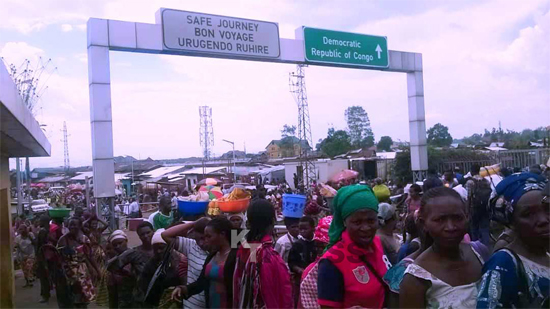Yes, back in 2014, many alternative health websites went hyper-hysterical concerning the West Africa outbreak of Ebola, predicting over a million dead worldwide and the imposition of martial law in the US in response to Ebola ripping through the States, passed along by infected people coughing and sneezing their way to the end times. Of course, that didn’t happen. As a result, many people adopted the attitude vis-a-vis Ebola, “Fool me once, shame on you. Fool me twice, shame on me.” But before you tune out this newsletter, keep in mind that I never pitched an apocalyptic view. In fact, at the time, I said, “There’s no reason for hysteria. The current outbreak of Ebola is highly unlikely to ever become a worldwide pandemic. If you live outside of Africa and are not planning to visit an affected area in the near future, your chances of dying from Ebola are as close to zero as you can get–without actually being zero.” So, when I tell you that you need to be concerned about the current Ebola outbreak in Africa, you might wonder why? What’s changed? And the answer is: nothing has changed. The danger from Ebola does not lie where you might think. If you’re not concerned, it’s because you’re looking at it all wrong. Let me explain.
The Current Outbreak
The current outbreak started last summer (2018) in the Democratic Republic of Congo (DRC). And the fact that we’re still talking about it nine months later should give you a hint as to the problem. Now, I first wrote about this particular outbreak last June, shortly after it started, and as it turned out people really weren’t interested in hearing about it, and they especially didn’t like my criticism of several decisions by the US government that I said were likely to increase the danger and extend the outbreak. (We received many emails here at the Foundation to that effect.) But my analysis of government decisions was not political; it was based on objective observation. That is, actions have consequences, which means it’s not that hard to predict the end consequences once you know the actions that have been taken. And again, the fact that we’re still talking about the same outbreak nine months after it first appeared certainly suggests that my observations were more correct than not.
So, with that in mind, and for the rest of the newsletter, we’re going to look at:
- A recap of where we were last summer
- The current state of the outbreak and the dangers of it spreading
- How that can affect people living outside of the infected areas
- Why you should be concerned
- And what you can do about it
A Recap of Where We Were Last Summer
 As I mentioned, the current outbreak started last May, and I first wrote about it in June. At that time, the number of confirmed cases stood at 35-58 with a death toll of 12-27 (depending on whose numbers you used) and an additional 600 considered at risk. The danger at that time was that the epidemic had spread to the crossroads city of Mbandaka, a densely populated provincial capital on the Congo River. This presented two problems:
As I mentioned, the current outbreak started last May, and I first wrote about it in June. At that time, the number of confirmed cases stood at 35-58 with a death toll of 12-27 (depending on whose numbers you used) and an additional 600 considered at risk. The danger at that time was that the epidemic had spread to the crossroads city of Mbandaka, a densely populated provincial capital on the Congo River. This presented two problems:
- Mbandaka has a population of more than 1 million people living in close proximity.
- Mbandaka’s location on the Congo river is very concerning. It is in a busy travel corridor upstream from Congo’s capital, Kinshasa, a city of about 10 million. It is also close to Brazzaville, the capital of the Republic of Congo, population 1 million, as well as the Central African Republic.
Also as I mentioned at the time, these dangers were compounded by the fact the US largely pulled out of the Ebola game by rescinding most of the special Ebola funding from the federal budget, removing most of the financing for State Department emergency responses, and removing the official in charge of pandemic response–effectively shutting down the entire epidemic prevention office. (Note: some of those monies subsequently made it back into the 2019 budget as supplemental appropriations to overseas contingency operations funding–but at much lower levels. And more importantly, irrevocable damage had already been done.)
The Current State of the Outbreak and the Dangers of It Spreading
As it turns out, the concerns I expressed last June were justified. Cases of Ebola in the current outbreak have more than tripled since then, with an expanded geographical footprint into 18 health zones.1 “Ebola virus disease–Democratic Republic of the Congo External Situation Report 25: update.” WHO Jan 23, 2019. (Accessed 9 Feb 2019.) Additionally, several governments have followed the US lead and have withdrawn personnel, both from lack of funding and fearing for their safety.2 Gostin LO, Kavanagh MM, Cameron E. “Ebola and war in the Democratic Republic of Congo: avoiding failure and thinking ahead.” JAMA. 2019; 321: 243-244. http://jamanetwork.com/journals/jama/article-abstract/2717586 Specifically, the death toll for the current outbreak now tops 510 deaths, including 449 people who died from confirmed cases of Ebola. The other deaths are from probable cases–just not officially confirmed. Given that there are more than 810 people have reported symptoms of hemorrhagic fever, with 750 of them confirmed as Ebola, this puts the mortality rate at nearly 63%. Sadly, about 100 of those deaths are among children younger than 5 years old according to a press release from Save the Children.3 “97 Child Deaths as Ebola Cases Spike in the Democratic Republic of Congo.” Save the Children. 10 Feb 2019. (Accessed 11 Feb 2019.) http://www.savethechildren.org/us/about-us/media-and-news/2019-press-releases/ebola-spike-in-democratic-republic-of-congo It is now the second largest Ebola outbreak in world history. In December, the outbreak reached Butembo, a city of over a million near the Ugandan border and is currently headed toward Goma, another major million-resident city that shares a busy border with Rwanda. More dangerously, the outbreak has now entered the war-torn region bordering South Sudan, Uganda, Rwanda, and Burundi. This is especially dicey since armed militias target Congolese civilians and foreign aid workers making it difficult, if not impossible, for response teams to reach and work in these rural areas. This is serious as, without response teams, it gives Ebola a chance to both gain a strong foothold and momentum.
As Laurie Garrett says in her January article in Foreign Policy:
“The small army of international health responders and humanitarian workers in Congo is playing whack-a-mole against a microbe that keeps popping up unexpectedly and proving impossible to control. This is not because of any special attributes of the classic strain of Ebola–the same genetic strain that has been successfully tackled many times before–but because of humans and their behaviors in a quarter-century-old war zone.”4 Laurie Garrett. “Ebola Has Gotten So Bad, It’s Normal.” FP January 15, 2019. (Accessed 9 Feb 2019.) http://foreignpolicy.com/2019/01/15/ebola-has-gotten-so-bad-its-normal/
What this means–and here’s a key point in this newsletter–is that there is a genuine threat that, for all intents and purposes, this particular outbreak is transitioning Ebola from a series of defined, short-term epidemics (as we have always seen in the past) into a permanent, ongoing, endemic disease. In other words, for the first time in human history, we will conceivably be dealing with Ebola non-stop for the foreseeable future. And that exponentially increases the risks associated with the disease.
On the positive side, use of an experimental vaccine has made some health workers optimistic about treating this outbreak. As WHO Director-General Tedros Adhanom Ghebreyesus said, “One thing I am really certain of now is: If it wasn’t for the vaccine we’re using, the number of cases we have could have been really high, high, high.”5 Helen Branswell. “WHO’s Tedros: Experimental Ebola vaccine in the DRC has saved countless lives.” STAT January 4, 2019. (Accessed 9 Feb 2019.) http://www.statnews.com/2019/01/04/ebola-vaccine-tedros-drc/ On the negative side, the sheer duration of the present epidemic means that the 4.5 million people in the currently affected North Kivu province of Congo are no longer the only ones in danger. The rest of the country and populations in the bordering nations of Uganda, Rwanda, South Sudan, and Burundi are now at risk, too. There simply isn’t enough vaccine available to protect against that sort of risk. (And before you attack the use of vaccines, you just might want to consider that any protection from Ebola is better than none. Ebola is an especially nasty way to go.)
An even bigger problem than simple supply and demand, though, is that effective use of the vaccine requires that health workers be able to accurately identify all cases of Ebola so that they know where to concentrate the use of vaccination. Unfortunately, that sort of information just doesn’t exist in rural areas–or even in cities since people there are afraid to talk to health workers. In fact, less than 20% of new Ebola cases have shown up on contact lists.6 Nuzzo JB, Inglesby TB. “Ramping up the response to Ebola.” N Engl J Med. 2018; 379: 2490-2491. http://www.nejm.org/doi/full/10.1056/NEJMp1814296 If this doesn’t change, WHO might have to shift from ring vaccination, the most efficient way to make use of limited vaccine supplies, to vaccination based on geographical location, a much less precise methodology that requires far more doses to protect against any given outbreak; thus making already limited vaccine supplies even more limited.7 Kelland K. “As Ebola threatens mega-cities, vaccine stockpile needs grow.” Reuters. 20 Dec 2018. (Accessed 9 Feb 2019.) http://www.reuters.com/article/us-health-ebola-stockpile/as-ebola-threatens-mega-cities-vaccine-stockpile-needs-grow-idUSKCN1OJ21B
How Can this Affect People Not Living in Central Africa?

For all the reasons mentioned above, the risk of the cross-border spread of Ebola to Uganda, Rwanda, and South Sudan is high.8 Ebola virus disease Traffic between these countries is massive. We’re talking about tens of thousands of Congolese who cross borders daily to trade, to visit family, or attend funerals. Roads from the DRC to Kigali (the capital of Rwanda) and Kampala (the capital of Uganda) are well traveled and easily facilitate Ebola transfer to large population centers. Now, it should be noted that unlike the DRC, Uganda and Rwanda have reasonably solid surveillance systems when it comes to Ebola and are preparing for the possibility of cross-border spread. And yes, Uganda has vaccinated essential health workers and is reportedly screening all travelers at Entebbe airport.9 URN. “WHO orders mandatory Ebola screening at Entebbe airport.” The Observer (Kampala). Jan 14, 2019. (Accessed 9 Feb 2019.) http://www.observer.ug/news/headlines/59640-who-orders-for-mandatory-ebola-screening-at-entebbe-airport However, the sheer number of people involved who could potentially be carrying Ebola means that cases can easily be missed at the border. And even though Rwanda and Uganda may have their acts somewhat together, South Sudan does not. It is among the world’s most dysfunctional states. Not by any stretch of the imagination is it capable of adequately screening people at its border. And even worse, a widening epidemic of Ebola could easily destabilize the region even further than it already is and disrupt the tenuous peace in South Sudan, where violence continues, famine is predicted, and Ebola could find a welcoming home.10 Kuol L. “Why South Sudan faces collapse if peace pact fails–again.” The Conversation. Nov 8, 2018. (Accessed 9 Feb 2019.) http://theconversation.com/why-south-sudan-faces-collapse-if-peace-pact-fails-again-106188
Why You Should Be Concerned
For most of you reading this now, this is probably your big question. So, let’s address it.
In the past 6 months, 300,000 DRC refugees have crossed into Uganda, adding to an already existing refugee population of just over 1 million (mostly war and violence refugees from South Sudan and the DRC).11 “Refugees and asylum seekers from DRC.” UNHCR Operational Portal. 31 December 2018. (Accessed 9 Feb 2019.) http://data2.unhcr.org/en/situations/drc Keep in mind that Uganda (not the United States) is already one of the largest refugee hosting nations in the world and, as we have seen with people fleeing the war in Syria, large scale refugee situations tend to spill well beyond their borders. If Ebola truly becomes endemic and wide-ranging in Africa, we could easily see several million people fleeing the continent and looking to escape to Europe and North America. If you think we have a problem on our borders now, an Ebola driven migration could make that look like the first gentle rain before a storm.
The West African Ebola epidemic of 2014–16 reduced regional economies by $2-8 billion.12 “2014–2015 West Africa Ebola Crisis: Impact Update.” The World Bank. (Accessed 9 Feb 2019.) http://www.worldbank.org/en/topic/macroeconomics/publication/2014-2015-west-africa-ebola-crisis-impact-update A similar impact from the current outbreak in the DRC and neighboring countries could devastate their fragile economies unleashing hordes of refugees. And if you think trade or travel barriers to stop the flow of goods and people out of the DRC are a suitable answer, they are not. They would have a devastating impact on all aspects of life–both fiscal and social–and on all countries in this region…and beyond. Spread that throughout the entire African continent and you are looking at a severe crushing of the world’s fastest growing economy. Yes, I’m talking about Africa. Many people underestimate Africa now. They think it’s like what they saw in the original Tarzan movies. Nothing could be further from the truth. Yes, there are still undeveloped areas. But currently, Africa has 1.25 billion people, 140,000 millionaires, and a 6.36 trillion-dollar GDP in terms of purchasing power parity.13 “GDP Nominal and PPP Data, current prices”. International Monetary Fund. 2018. Retrieved 6 March 2018. http://www.imf.org/external/datamapper/datasets/WEO/1 Recent growth has been due to increased sales in commodities, services, and manufacturing.14 “Africa rising”. The Economist. 3 December 2011. (Accessed 9 Feb 2019.) http://www.economist.com/node/21541015 Without Ebola messing things up, it was projected that Sub-Saharan Africa alone would reach a GDP of $29 trillion by 2050.15 Charles Robertson. “Get ready for an Africa boom”. CNN. January 22nd, 2013. (Accessed 9 Feb 2019.) http://globalpublicsquare.blogs.cnn.com/2013/01/22/get-ready-for-an-africa-boom/ With Ebola running unchecked, however, that number would tumble.
 So, why would this matter to you:
So, why would this matter to you:
- First and foremost, you should be concerned for humanitarian reasons. Just because you can’t see it happening next door doesn’t mean you shouldn’t care about how a continent-wide spreading of Ebola would tragically affect countless lives in Africa. Our world is smaller and more interconnected than ever before. If you wanted to get on a plane, you could be in Africa in a matter of hours. Or as Dirk Gently was fond of saying, “Everything is connected.”16 http://www.youtube.com/watch?v=Ozbq0bO_zPk
- And if that doesn’t work for you, then consider that if African industry crashes, many of the things you now buy or depend on (oil, chocolate, timber, precious metals, etc.) will cost more–potentially much more. African derived resources and manufacturing are fundamental to much of what we eat and the products we use.
- And finally, a collapse in Africa will severely hurt many of the US companies we either work for or depend on for our own economy and jobs. Why? Quite simply, last year US businesses and investors made more foreign direct investments (FDI) in Africa than their counterparts in any other country. According to EY Global’s 2018 Africa Attractiveness report, US businesses increased the number of American FDI projects in Africa by 43% in 2017, nearly twice the next country.17 “Turning Tides: EY Attractiveness Program, Africa.” October 2018. (Accessed 9 Feb 2019.) http://bit.ly/2PZcPcQ Any pain experienced by these companies in Africa is likely to be shared both with their employees in the States and their customers throughout the world who depend on their products.
Quite simply, if you have choose not to pay attention to the current outbreak of Ebola in Africa because you believe that we should focus our resources on problems at home and not on foreign aid, you might want to modify that view based on simple financial self-interest.
And What Can You Do About It?
At this point, there’s not a lot you can do other than pay attention and keep aware. Things like Ebola are so epic in nature that they require governmental response–and not just one government, but multiple governments working in cooperation. Unfortunately, the US has chosen to largely disengage itself from this effort, which has led several other countries to follow its lead. Fortunately, groups like the UN and Doctors Without Borders are fighting the good fight and trying to plug the dike with their fingers. If they can keep the outbreak at bay for two more years, then vote for either Republicans or Democrats who understand that Ebola is an existential threat. On the other hand, if we don’t defeat Ebola over there, we’ll have to deal with the consequences here. And if 2020 turns out to be too late and Ebola has broken its epidemic status, become a full-on endemic situation in Africa, and made a mockery of however you might vote in 2020, then you can shift strategies to impressing your friends at dinner parties by cleverly misquoting Bette Davis’ line from All About Eve, “Fasten your seatbelts; it’s going to be a bumpy ride!”18 “Classic Ten — Misquotes From the Movies.” AMC. 2010. (Accessed 10 Feb 2019.) http://www.amc.com/talk/2009/09/classic-ten-m-7

References
| ↑1 | “Ebola virus disease–Democratic Republic of the Congo External Situation Report 25: update.” WHO Jan 23, 2019. (Accessed 9 Feb 2019.) |
|---|---|
| ↑2 | Gostin LO, Kavanagh MM, Cameron E. “Ebola and war in the Democratic Republic of Congo: avoiding failure and thinking ahead.” JAMA. 2019; 321: 243-244. http://jamanetwork.com/journals/jama/article-abstract/2717586 |
| ↑3 | “97 Child Deaths as Ebola Cases Spike in the Democratic Republic of Congo.” Save the Children. 10 Feb 2019. (Accessed 11 Feb 2019.) http://www.savethechildren.org/us/about-us/media-and-news/2019-press-releases/ebola-spike-in-democratic-republic-of-congo |
| ↑4 | Laurie Garrett. “Ebola Has Gotten So Bad, It’s Normal.” FP January 15, 2019. (Accessed 9 Feb 2019.) http://foreignpolicy.com/2019/01/15/ebola-has-gotten-so-bad-its-normal/ |
| ↑5 | Helen Branswell. “WHO’s Tedros: Experimental Ebola vaccine in the DRC has saved countless lives.” STAT January 4, 2019. (Accessed 9 Feb 2019.) http://www.statnews.com/2019/01/04/ebola-vaccine-tedros-drc/ |
| ↑6 | Nuzzo JB, Inglesby TB. “Ramping up the response to Ebola.” N Engl J Med. 2018; 379: 2490-2491. http://www.nejm.org/doi/full/10.1056/NEJMp1814296 |
| ↑7 | Kelland K. “As Ebola threatens mega-cities, vaccine stockpile needs grow.” Reuters. 20 Dec 2018. (Accessed 9 Feb 2019.) http://www.reuters.com/article/us-health-ebola-stockpile/as-ebola-threatens-mega-cities-vaccine-stockpile-needs-grow-idUSKCN1OJ21B |
| ↑8 | Ebola virus disease |
| ↑9 | URN. “WHO orders mandatory Ebola screening at Entebbe airport.” The Observer (Kampala). Jan 14, 2019. (Accessed 9 Feb 2019.) http://www.observer.ug/news/headlines/59640-who-orders-for-mandatory-ebola-screening-at-entebbe-airport |
| ↑10 | Kuol L. “Why South Sudan faces collapse if peace pact fails–again.” The Conversation. Nov 8, 2018. (Accessed 9 Feb 2019.) http://theconversation.com/why-south-sudan-faces-collapse-if-peace-pact-fails-again-106188 |
| ↑11 | “Refugees and asylum seekers from DRC.” UNHCR Operational Portal. 31 December 2018. (Accessed 9 Feb 2019.) http://data2.unhcr.org/en/situations/drc |
| ↑12 | “2014–2015 West Africa Ebola Crisis: Impact Update.” The World Bank. (Accessed 9 Feb 2019.) http://www.worldbank.org/en/topic/macroeconomics/publication/2014-2015-west-africa-ebola-crisis-impact-update |
| ↑13 | “GDP Nominal and PPP Data, current prices”. International Monetary Fund. 2018. Retrieved 6 March 2018. http://www.imf.org/external/datamapper/datasets/WEO/1 |
| ↑14 | “Africa rising”. The Economist. 3 December 2011. (Accessed 9 Feb 2019.) http://www.economist.com/node/21541015 |
| ↑15 | Charles Robertson. “Get ready for an Africa boom”. CNN. January 22nd, 2013. (Accessed 9 Feb 2019.) http://globalpublicsquare.blogs.cnn.com/2013/01/22/get-ready-for-an-africa-boom/ |
| ↑16 | http://www.youtube.com/watch?v=Ozbq0bO_zPk |
| ↑17 | “Turning Tides: EY Attractiveness Program, Africa.” October 2018. (Accessed 9 Feb 2019.) http://bit.ly/2PZcPcQ |
| ↑18 | “Classic Ten — Misquotes From the Movies.” AMC. 2010. (Accessed 10 Feb 2019.) http://www.amc.com/talk/2009/09/classic-ten-m-7 |











